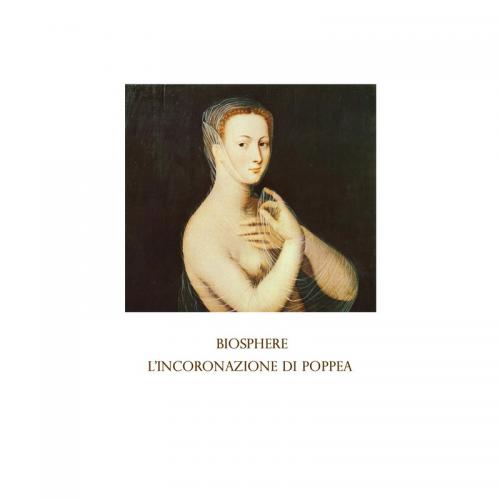L’incoronazione di Poppea is an opera by the Italian composer Claudio Monteverdi which was first performed in 1642. It also provides the title and basis for the latest work from prolific Norwegian ambient auteur Biosphere. Two instrumental pieces open the album; the first, “Qual Linea Al Centro,” uses glitchy, warped guitar samples that evoke Endless Summer-era Fennesz; the second, “Alla Diletta Mia,” employs filtered strings in a manner similar to that of Alva Noto’s acclaimed Xerrox series. Both tracks — and the aforementioned older works that seem to have inspired them — take the “medium is the message” route, featuring preexisting music and purposefully botching its transmission so as to underscore the tenuousness of memory and reproduction.
It’s not until the third track, “Tornerai?,” that we actually hear bits of the source opera itself, and the captured vocal performance sounds just as submerged and distorted as the instrumental numbers that precede it. The singer’s voice is looped and clipped and dubbed over itself to create a dizzying, surreal listening experience that seems to transcend notions of time and historicism. Biosphere’s Poppea is a decidedly modern and electronic work, but its archaic source material places it out of time and contemporary context. This is ageless music beholden to neither the seventeenth century compositional tropes on which this album is based nor modern methods of abstracting and digitizing orchestral samples. Parallels could certainly be drawn between this album releases like Black Swan’s seminal 2010 debut In 8 Movements or any number of “haunted ballroom” albums by The Caretaker, but in Biosphere’s case the focus seems to be less on creating a haunting (or haunted) effect and more on reframing the original opera (both vocals and instruments, especially strings) in a newer, unabashedly technological context. “Addio” serves as a useful microcosm for the album as a whole; clocking in at a brief 91 seconds (out of the album’s scant half-hour runtime), it combines what sounds like a male vocal sample with damaged fragments of guitars, droning strings, and enough static to lend the track an excavated, almost ephemeral quality, as though this music were found as is instead of carefully crafted by a single known musician.
The background information that Geir Jenssen provides on this album’s Bandcamp page perhaps sheds some light on his motivations for producing this piece: “The opera was revived in Naples in 1651, but was then neglected until the rediscovery of the score in 1888, after which it became the subject of scholarly attention in the late 19th and early 20th centuries. Since the 1960s, the opera has been performed and recorded many times.” This concept of rescuing that which has been forgotten or overlooked, of dusting off vestiges of past beauty and presenting them to modern audiences in all their aged, imperfect glory, owes as much to notions of digital archiving as it does to “plunderphonics” and the culture of sampling that’s been enthusiastically bolstered by the prevalence of the internet.
With this in mind, features like the ambling organ keys tucked away beneath the wavering drone of “Mutata” take on a reverent, almost anthropological significance. Just how much is Jenssen crafting these sounds, as opposed to simply channeling and messing with them? And is the latter any less valid a form of modern musical construction than the former? Is Jenssen’s presence on this album manifested in the glitches and static or in the choice of source material, or both? These are just some of the questions raised by Biosphere’s Poppea, and while they might be impossible to definitely answer, one thing is clear: the beauty of this work shines through even the most noisy obfuscations and treatments. Timelessness isn’t a quality that can necessarily be looped or sampled, but when it’s present in a work, it manifests itself clearly despite any and all distractions. As mentioned earlier, there are plenty of reference points to be discerned here; that said, I haven’t really heard anything particularly like this in the modern ambient scene, and for this originality I award Mr. Jenssen some well-deserved bonus points. L’incoronazione di Poppea is too short to overstay its welcome, but it leaves a lasting impression that itself points to another layer of remembrance and imperfect recollection; thinking about this work is like playing a game of aural telephone with the past, and when the results are this good, it’s impossible to lose.

